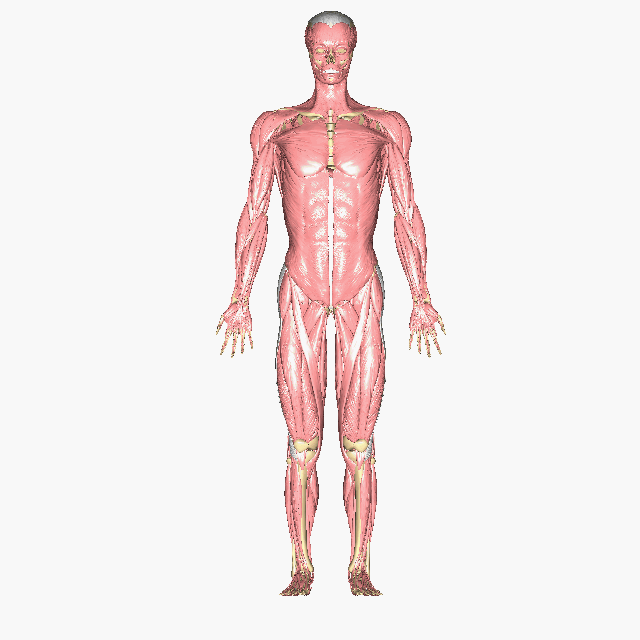12.1: Introduction
- Page ID
- 53684
Introduction
The skeletal muscles are the movers of the skeleton. Most of the skeletal muscles are paired, one right and one left, with the right and left muscles appearing as mirror images on opposite sides of the body. There are multiple layers of muscle in each body region with different fascicle directions, origins, and insertions to enable the diverse movements humans are capable of. Recall from Chapter 11: Introduction to Skeletal Muscles that muscles are named for their locations (often relates to the bones and their markings or positions such as medial and lateral), shapes ("biceps" for a two-lobed muscle, trapezoid-shaped, etc.), their actions (flexion, extension, pronation, adduction, etc.), their fascicle directions (rectus, oblique, transverse, etc.), and their sizes relative to other muscles (major, minor, maximus, medius, minimus).
As you use this chapter to understand the relative positions of each of the muscles, be aware that some figures show superficial muscles and other figures show deeper muscles by showing the model with more superficial muscles removed. To better understand the relative positions of these muscles, be sure to read the captions carefully to identify which muscles have been removed, where applicable. Details about the actions, origins, and insertions of the skeletal muscles are listed in the tables at the end of this chapter.

Above: Overview of superficial skeletal muscles.
Attribution
- "BodyParts3D/Anatomography" by The Database Center for Life Science is licensed under CC BY-SA 2.1


